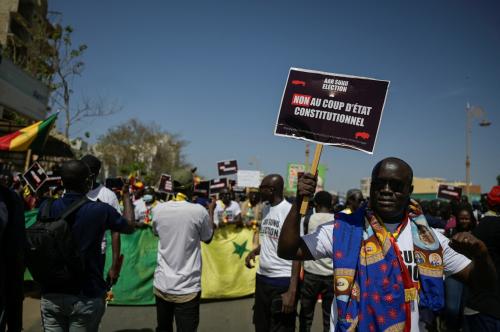Today, cities cover less than 2 percent of the Earth’s surface but they consume 78 percent of the world’s energy output and collectively they produce 60 percent of all carbon dioxide emissions. Within the next 15 years, a mere 500 cities will be responsible for most of the global growth in both gross domestic product (GDP) and carbon emissions. Cities are closest to the locus of responsibility and accountability for service delivery for a majority of people around the world and many cities are already leading the way in innovating and advancing sustainable development solutions. Confronting climate change and realizing the Sustainable Development Goals (SDGs) will require a surge of public and private financing to unleash the capacity of cities to foster sustainable development.
A large number of major cities currently experiencing the most rapid growth in population and emissions are essentially locked out of private capital markets. In regions such as sub-Saharan Africa, only two cities outside of South Africa have ever been able to issue a municipal bond to finance local investment with support from the national government. In many regions of the developing world, it is only the very largest cities that have engaged in bond financing. Facilitating access to capital for these pivotal urban areas in the short-term and enabling longer-term access to sustainable financing is central to integrating economic development with environmental stewardship.
Establishing a Sustainable Urban Development Fund could be a defining legacy of global cooperation to help achieve the SDGs and respond to the challenge of climate change. There remains a huge gap between the potential demand of cities in the developing world for investments in sustainable development and the current capacity of public and private actors to mobilize adequate financing. Core requirements of transparent financing and wide participation in the process of identifying strategic investments can in turn strengthen local governance and foster the adoption of norms of transparency and open government.
Cities and sustainable development
Today, about half of the world’s 7 billion people live in cities and by 2030 there will be a billion more urban residents. By 2050, another 3 billion urban dwellers will join them. Between 1950 and 2050 the global share of the population living in cities will have increased from under one-third to just about two-thirds of total population. Nearly all of this future population growth will take place in the developing world and 70 percent of those living in emerging markets will live in cities by 2050. By 2030, seven of the top 10 megacities in the world will be in Asia. Latin America already has 80 percent of its population living in cities and is one of the most urbanized regions in the world. In Africa, the world’s least urbanized region, urbanization growth is among the highest in the world and some projections suggest that cities will hold 50 percent of the continent’s population by 2035.
Cities around the world currently generate 80 percent of global GDP and are responsible for about 70 percent of global energy related carbon dioxide emissions. With many major cities located near coastlines, cities are also disproportionately impacted by climate change, with many major cities near coastlines, and are expected to bear more than 80 percent of the expected annual costs of climate adaptation. The major emissions sources in cities are diverse—including buildings, transport, waste, industry, and energy production—and yet the carbon footprint of each city is quite specific: In New Delhi, more than half of emissions are created by transportation while in Sao Paulo nearly a quarter of emissions are generated by landfills.
Around the world, cities are increasingly innovating to foster economic development and reduce emissions growth. Rapid Bus Transit in Bogota, Colombia, and Curitiba, Brazil, transformed their respective carbon footprints. Carbon market experiments now exist in Beijing, Chonqing, and Shanghai, which allow the buying and selling of carbon dioxide permits and swapping for cleaner energy that replaces coal. In Sao Paulo, using methane from one of the largest landfills in the country to produce energy reduced the city’s emissions by 11 percent. However, only 2 percent of these climate experiments are taking place in the least developed regions of the world. Without greater access to finance similar innovative experiments and scaled-up approaches are unlikely to take root in the world’s fastest growing cities.
Cities lack adequate access to financing
Cities in Europe and North America largely financed their economic development in the 19th and 20th centuries by unlocking land values and issuing municipal bonds and leveraging other forms of debt. Yet most cities in developing countries currently lack the capital markets and adequate sources of finance for major investments in sustainable development. Significant upfront capital costs and longer time horizons for payoffs on urban transportation and other infrastructure further hinder private investment in building greener cities. Finance remains the key obstacle to fostering low carbon cities in the 21st century.
Only 4 percent of the 500 largest cities in developing countries have internationally recognized credit ratings. Just 20 percent of these cities even have domestic ratings, which leaves them with little ability to self-finance infrastructure projects. Although municipal bonds have been used in major emerging economies such as Brazil, India, and South Africa, they have generally been concentrated in the largest cities. In Brazil, for example, just three municipalities account for 70 percent of all bond issues in the country.
The local tax bases of most cities are very narrow and highly dependent on property taxes. Local tax revenues, on average, yield just 0.5 percent of GDP in developing countries. Property taxes are also very hard to manage in countries without land registers and capacity sufficient to adequately assess values. African cities receive just 3 percent of all national public revenues and account for less than 8 percent of all public expenditures. By contrast, cities account for 40 percent of all domestic public expenditures in East Asia.
One of most powerful potential sources for financing sustainable urban development is to capture some of the increased land value generated by infrastructure projects. This can be achieved through better levies, tax increment financing, special assessments, and land readjustment. Brazil, China, Colombia, and India each successfully used this approach but most cities in low-income countries currently lack the capacity to adopt this successful approach. New institutions that can help leverage global finance and disseminate best practices for capturing local resource flows will be crucially important to catalyzing sustainable urban development.
Creating a sustainable urban development fund
Members of the United Nations just adopted a new set of global Sustainable Development Goals, including for the first-time a standalone goal to make cities “inclusive, safe, resilient, and sustainable.” The High-Level Panel on the Sustainable Development Goals highlighted that the battle for sustainable development will be won or lost in cities. At the same time, the global response to the climate challenge is likely also to depend on the capacity of cities to pursue green growth and a low carbon future. While some existing financing mechanisms support sustainable urban development, the scale of these efforts does not match the ambition of the new goals or the scope of the current challenge.
Existing institutions offer valuable models for thinking about catalyzing sustainable urban development but generally remain modest in scope. In the Americas, the Inter-American Development Bank currently has an Emerging and Sustainable Cities Multi-Donor Trust Fund. However, it leverages no more than $15 million in investment. The Clean Technology Fund is one of the biggest players in terms of funding urban climate projects. Yet less than 10 percent of its urban funding was approved in low-income countries.
Access to loans and financial markets has been the backbone of most infrastructure investments in cities in the industrialized world over the past two centuries. Such an approach is often subsidized by national governments as it is in the U.S. with tax-free municipal bonds that create special incentives for investors. In Dakar, Senegal, the United States Agency for International Development helped catalyze one of the first non-sovereign municipal bond issuances in sub-Saharan Africa through a partial loan guarantee. Dakar will have new access to financial markets because of a 50 percent debt guarantee by the United States Treasury. This could prove to be a valuable model for other cities in the region and around the world to access the potential of local finance.
Diverse strategies will be required in different countries depending on the major sources of emissions and the most leveraged development opportunities. The transport sector is the second largest overall contributor to greenhouse gas emissions. Integrated Rapid Bus Transit and other models can dramatically reduce the carbon footprints of cities. Energy efficiency is another major opportunity for cities to contribute to lowering global emissions. The residential and commercial building sectors offer many opportunities for greater energy efficiency through building codes, insulation enhancements, substituting inefficient appliances, and replacing lighting fixtures. Landfills are also a largely untapped landscape for reducing urban emissions. As in Sao Paulo, urban landfills can be a major source of emissions but can also be harnessed for energy production.
A Sustainable Urban Development Fund would make urban infrastructure markets more attractive for private investment by using public funds to leverage private resources and would also prioritize sustainable development over other investments. A range of incentives structures could be utilized, including risk mitigation and credit enhancement mechanisms, loans, grants, partial loan guarantees, and green bonds for infrastructure. Ultimately, building the capacity of cities to develop land capture tools will be crucial. A number of strategies could be employed including creating tax increment financing districts, adopting new charges on development, or collaborating on development rights through joint public-private development.
The governance of a Sustainable Urban Development Fund ought to incorporate the best practices of multi-stakeholder governance from leading financing mechanisms in other sectors such as global health. By involving not just mayors, but also civil society actors, business, and foundations in the process of the fund’s governance, a Sustainable Urban Development Fund could catalyze new modes of engagement among societal actors and better local governance. Many recent environmental institutions have resisted borrowing a multi-stakeholder approach to governance in favor of more state-centric models. However, more participatory institutions, which include civil society and other non-state actors as partners in formal governance, have proven to be more successful at leveraging both donor resources and private sector contributions while fostering stronger accountability.
The governance structure of the fund should include diverse actors with the capacity to expand resource mobilization, deepen deliberation, and catalyze greater institutional effectiveness. Specifically, the fund’s governance should include seats for non-governmental organizations from both the global North and South, as well as for those most directly affected by climate change, for private foundations, and for the private sector. In this way, the Sustainable Urban Development Fund could borrow best practices from other 21st century international institutions in order to foster more transparent and accountable urban governance, reduce global emissions, and catalyze significant progress toward achieving the Sustainable Development Goals.
REFERENCES
Barnard, Sam. Climate Finance for Cities: How Can International Climate Funds Best Support Low-Carbon and Climate Resilient Urban Development? Overseas Development Institute, 2015.
Bhattacharya, Amar et. al. Driving Sustainable Development Through Better Infrastructure: Key Elements of A Transformation Program. Brookings Institution, 2015
Financing Urban and Local Development: The Missing Link in Sustainable Development Finance. Global Taskforce of Local and Regional Governments for Post-2015 Development Agenda Towards Habitat III, 2015.
Gartner, David and Homi Kharas. “Scaling-Up Impact: Vertical Funds and Innovative Governance” in Laurence Chandy, Homi Kharas, & Akio Hosono, eds. Getting to Scale: How to Bring Development Solutions to Millions of Poor People. Brookings Institution Press, 2013.
Gutman, Jeffrey et. al. Financing African Infrastructure, Can the World Deliver? Brookings Institution, 2015.
Kharas, Homi and Johannes F. Linn. “External Assistance for Urban Finance Development: Needs, Strategies, and Implementation” in Roy W. Bahl, et. al. Financing Metropolitan Governments in Developing Countries. Lincoln Institute of Land Policy, 2013.
Mainelli, Michael and Chiara von Gunten. Financing the Transition: Sustainable Infrastructure in Cities. Long Finance and WWF, 2015.
Martin, Matthew and Jo Miller. Financing the Sustainable Development Goals: Lessons From Government Spending on the MDGs. Oxfam, 2015.




